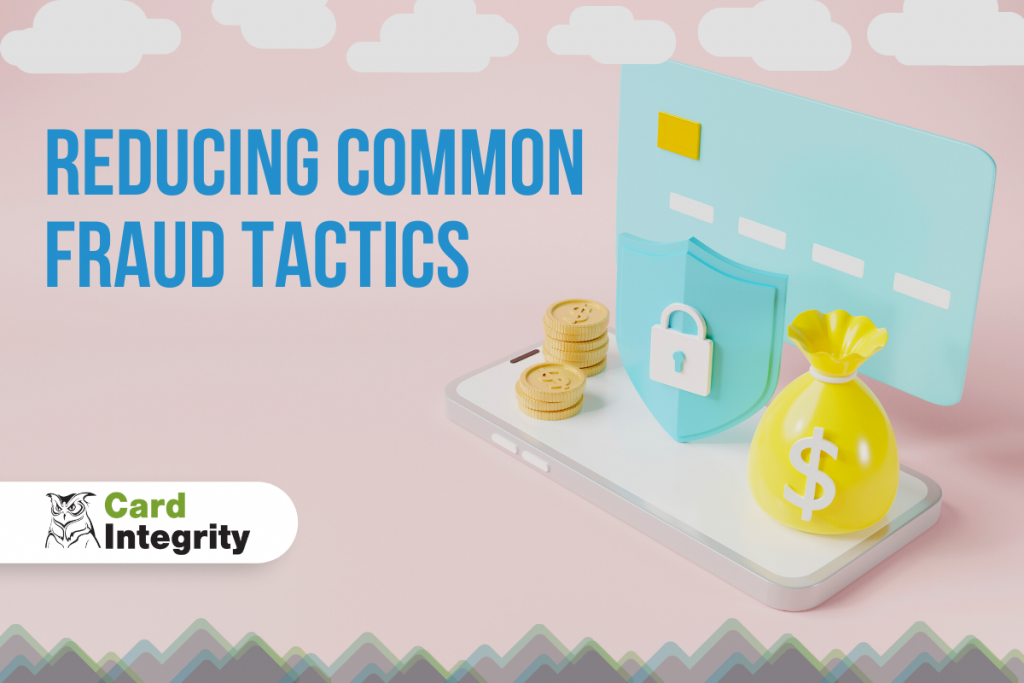With every growing and active card program, potential employee fraud instances, unfortunately, come with the territory. Whether someone is knowingly or unknowingly using their P-Card or T&E card to commit fraud, it’s still a very serious problem within any organization.
The best way to combat common expense fraud is to know what you’re looking for and strengthen your expense monitoring controls. Also, remember that you’re not alone. Card program managers and department heads are often experiencing very similar challenges and situations day-to-day. Card Integrity is here to help aid as you work to thoroughly review expenses and detect potential fraud.
In this step-by-step guide, we’ll assess 3 common expense fraud tactics and disclose some action steps to help you address and prevent them.
1. Gift Card Purchases

Gift card purchases are one of the most common expense fraud schemes card program managers are seeing these days. When an employee purchases a gift card, it doesn’t automatically mean there’s fraud involved. This is especially true if your card policy allows for the purchase of certain gift cards.
However, gift cards make it extremely easy to mask a non-compliant purchase. For example, someone can easily purchase gift cards from Lowes or Starbucks and claim they are buying gifts for certain departments. Or, they can list an approved business reason to hide the fact that they purchased a gift card at all.
On the small scale, this type of fraud is unacceptable and diverts money away from the organization. On a larger scale, fraudulent gift card purchases can become an additional “income” for an employee and result in thousands of dollars over time if left unchecked.
Here are some key steps to catch and prevent gift card fraud.
Step 1: Clearly outline if and how gift cards can be used in your card policy. Have employees review the policy and agree to the terms. You may even want to consider offering a refresher training session for them (either online or in-person). This helps employees stay up-to-date on all the latest policy standards.
Step 2: Have multiple eyes review transactions. Ideally, transactions need to be approved by a card manager during an official expense review process. This can help weed out dead giveaways like whole number purchases (ie. $30 or $150) that could indicate someone purchased a gift card for personal use.
Step 3: Use level 3 data to confirm the purchase was an unapproved gift card. While whole number purchases at a gas station or store isn’t a smoking gun that verifies a gift card was bought, level 3 data can determine this. Level three bank data provides specific transaction data including line item details and product codes for certain vendors.
2. Falsified Receipts and Lack of Business Reason

If someone is trying to hide a purchase they made, it makes sense that they might fail to enter a business reason when they submit the expense report for review. Unfortunately, there are also many websites that will aid someone in falsifying a receipt to conceal a purchase. This can be very difficult to spot.
However, there are some key steps to uncover this common expense fraud.
Step 1: Make sure all employees are submitting business reasons. This is another case where a thorough expense audit performed consistently can deter cardholders from omitting business reasons for their purchases. If you’re able to see the data laid out in an organized spreadsheet or similar document, it’s easy to identify which purchases lack a legitimate business reason. Then, you can decide how you’d like to proceed.
Step 2: Compare all the data sources including Level 3 data. Again, having access to level 3 data is crucial in detecting this and similar common expense fraud schemes. It can increase your visibility and let employees know that you’re leaving no stone unturned.
Step 3: Implement anti-fraud technology. Anti-fraud technology, such as running your bank data through a system that uses alerts and analyzes data to identify red flags, can help further improve visibility. This includes analyzing data from a single employee’s spend. Or, setting up alerts that expose receipts that don’t match up or lack business reasons.
3. Large or Luxury Purchases

Large or luxury purchase fraud with P-Cards often make the news headlines seeing as they can be very outlandish. For example, one New York Post story reported how employees of a homeless services provider spent $1.4 million on expenses that were against policy including thousands on a chartered boat ride.
In some cases, these types of employee fraud schemes can be seen with someone who’s higher up and feels as if they don’t have anyone to closely monitor their activity. Or perhaps, the employee decides to miscategorize the expense knowing that it wouldn’t be approved in the first place. If no controls are in place to help investigate, large or luxury purchases could slip under the radar.
Here are some important steps to help prevent this type of employee fraud.
Step 1: Make sure there’s a separation of duties. Avoid allowing manager expenses to be reviewed by an assistant. This could create a situation where the assistant feels their job could be threatened if they reported their manager’s fraud activity. Also, make sure there’s a clear separation of duties. This means the same person issuing P-Cards probably shouldn’t have one. In addition, the team responsible for validating card spend shouldn’t have cards either as this could create a conflict.
Step 2: Require receipts to be attached to transactions. This will be especially helpful when reviewing larger purchases. Again, you can utilize level 3 data to ensure the receipt matches the expense report and wasn’t falsified.
Step 3: Utilize AI and data analysis to verify expenses are correctly categorized. A luxury or large unapproved purchase isn’t going to hide in the open. Technology unfortunately makes it easier to hide fraud. As a result, it only makes sense to utilize technology like AI and expense data analysis tools to help uncover it. Running employee expense reports from bank data through analysis can uncover red flags that may be missed with a manual review process.
Stopping Common Expense Fraud with the Right Tools

Ultimately, stopping common employee fraud comes down to consistency, strong internal controls, and having the right tools by your side. It’s important to involve different people in the process for accountability purposes. This includes a third-party expense monitoring company like Card Integrity.
Card Integrity contains the necessary tools and wherewithal to help you build stronger expense audit controls. We leverage technology, automation, and a people-focused service to help analyze your expense data in its entirety. Our Forensic Principals on staff are able to customize reports, set new alerts, and highlight any areas you’d like to review more closely.
What’s more important, is that our expense monitoring service, DataWISE, does not require a lot of tech-savvy. The tool is flexible and easy to use when it comes to improving visibility. In addition to our expense review services, we also offer cardholder training and receipt review solutions. To learn more about our expense monitoring solutions or to schedule a demo, click here. Or, you can give us a call today at 630-501-1507.



